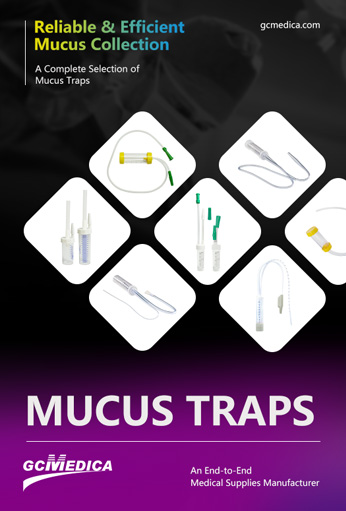For adults experiencing respiratory issues—whether due to chronic conditions, infections, or allergies—a mucus extractor can be a valuable tool for clearing secretions from the airway. While commonly associated with pediatric care, mucus extractors designed for adults are gaining recognition for their role in improving respiratory function and overall comfort.
 GCMEDICA Mucus Extractor Online Promotion >
GCMEDICA Mucus Extractor Online Promotion >
What Is a Mucus Extractor for Adults?
A mucus extractor for adults is a medical device designed to remove mucus, sputum, and other respiratory secretions from the lungs or nasal passages. These devices come in various sizes and configurations tailored to adult anatomy. They are often used by healthcare professionals in clinical settings, but some devices are also available for home use by patients under medical guidance.
Key Benefits and Applications
Improved Airway Clearance:
Effective removal of mucus helps maintain clear airways, reducing the risk of infection and improving oxygenation. This is particularly beneficial for patients with chronic bronchitis, pneumonia, or other respiratory conditions.Enhanced Breathing and Comfort:
By removing excess secretions, mucus extractors can alleviate symptoms such as coughing, wheezing, and shortness of breath. This leads to improved comfort and better overall respiratory function.Support for Respiratory Therapy:
Mucus extractors can be integrated into respiratory therapy protocols to assist with airway clearance techniques. They serve as a supportive tool in rehabilitation programs for patients recovering from respiratory illnesses.Prevention of Complications:
Consistent removal of mucus helps prevent the accumulation of secretions that could obstruct the airways, thereby reducing the risk of complications like atelectasis or secondary infections.
Types of Mucus Extractors for Adults
There are various types of mucus extractors available, each with its unique features:
Manual Mucus Extractors:
These are hand-operated devices that allow the user to control the suction manually. They are ideal for intermittent use and are often favored in home care settings where simplicity and ease of use are critical.Electric or Battery-Operated Extractors:
Designed for more consistent and controlled suction, these devices are suitable for clinical environments. They often feature adjustable suction settings to accommodate different patient needs.Integrated Systems:
Some mucus extractors are built into larger respiratory care systems, offering seamless integration with other equipment such as ventilators or oxygen delivery systems. These systems are typically used in intensive care units and other hospital settings.
How to Choose the Right Mucus Extractor
When selecting a mucus extractor for adults, consider the following factors:
Patient Needs:
Evaluate the patient's condition, severity of mucus accumulation, and overall respiratory status. The choice of device should align with whether the need is temporary or part of long-term therapy.Ease of Use:
The device should be user-friendly, especially if it will be used by non-professionals at home. Clear instructions and minimal maintenance requirements are key attributes.Adjustability of Suction:
Devices with adjustable suction settings provide better control and can be tailored to the patient’s comfort level, reducing the risk of airway trauma.Portability and Power Source:
Consider whether the device needs to be portable. Battery-operated models offer flexibility, particularly for patients who require mobility.Cost and Budget:
Compare pricing among different models and suppliers. Look for solutions that provide a good balance between cost and the features required for effective respiratory care.
Conclusion
A mucus extractor for adults is a critical device in respiratory care, offering significant benefits in airway clearance, comfort, and overall patient outcomes. By understanding the different types available and carefully evaluating the needs of the patient, healthcare providers and caregivers can choose the most effective and economical solution. An informed choice not only optimizes respiratory function but also enhances the quality of care for adults suffering from respiratory conditions.
| Mucus Traps > |


 Français
Français Español
Español Products
Products

 About Us
About Us













